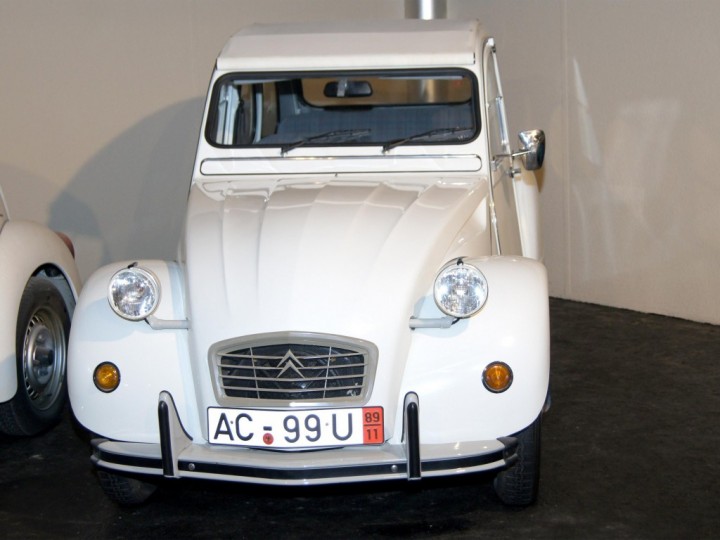1990 Citroen 2CV6
en.wikipedia.orgën_2CV
The Citroën 2CV (French: "deux chevaux" i.e. "deux chevaux-vapeur [fiscaux]", literally "two tax horsepower") was an economy car produced by the French car manufacturer Citroën between 1948 and 1990. It was technologically advanced and innovative, but with uncompromisingly utilitarian unconventional looks, and deceptively simple Bauhaus inspired bodywork, that belied the sheer quality of its underlying engineering. It was designed to move the French peasantry on from horses and carts. It is considered one of Citroën's most iconic cars. In 1953 Autocar in a technical review of the car wrote of "the extraordinary ingenuity of this design, which is undoubtedly the most original since the Model T Ford". It was described by Car Magazine journalist and author L. J. K. Setright as "the most intelligent application of minimalism ever to succeed as a car".It was designed for low cost, simplicity of use and maintenance, versatility, reliability, low fuel consumption and off-road driving. For this it had a light, easily serviceable engine, extremely soft long travel suspension (with height adjustment by lengthening/shortening of tie rods)[6] high ground clearance, and for oversized loads a car-wide canvas sunroof, which (until 1955) also covered the boot.
During a production run of 42 years between 1948 and 1990, 3,872,583 2CVs were produced, plus 1,246,306 Fourgonnettes (small 2CV delivery vans), as well as spawning mechanically identical vehicles including the Ami: 1,840,396; the Dyane: 1,444,583; the Acadiane: 253,393; and the Mehari: 144,953, a grand total of 8,756,688, of which there are still 3,382 on the road in the UK as of January 2013.




